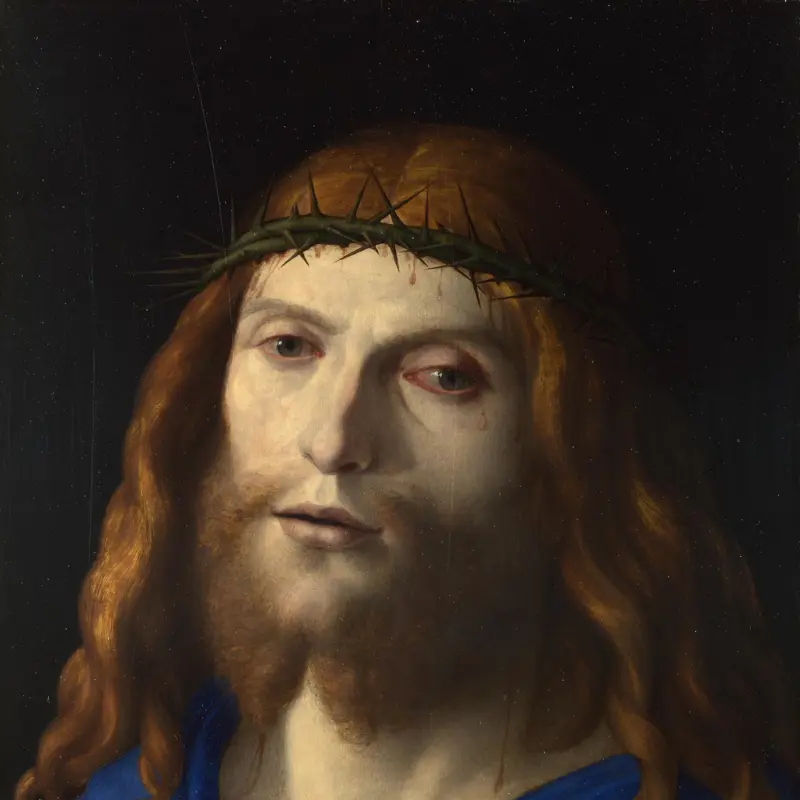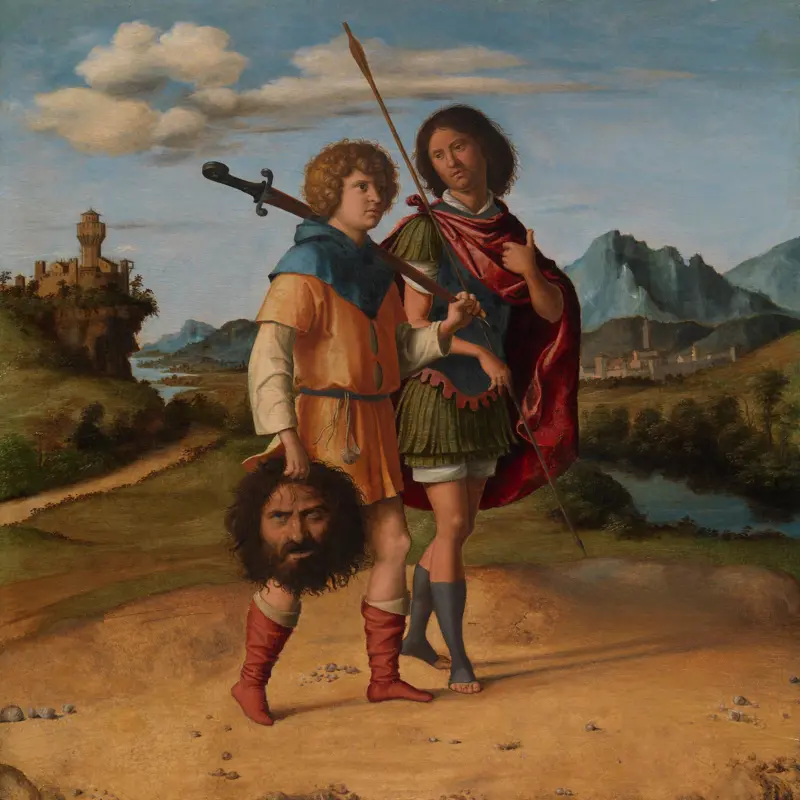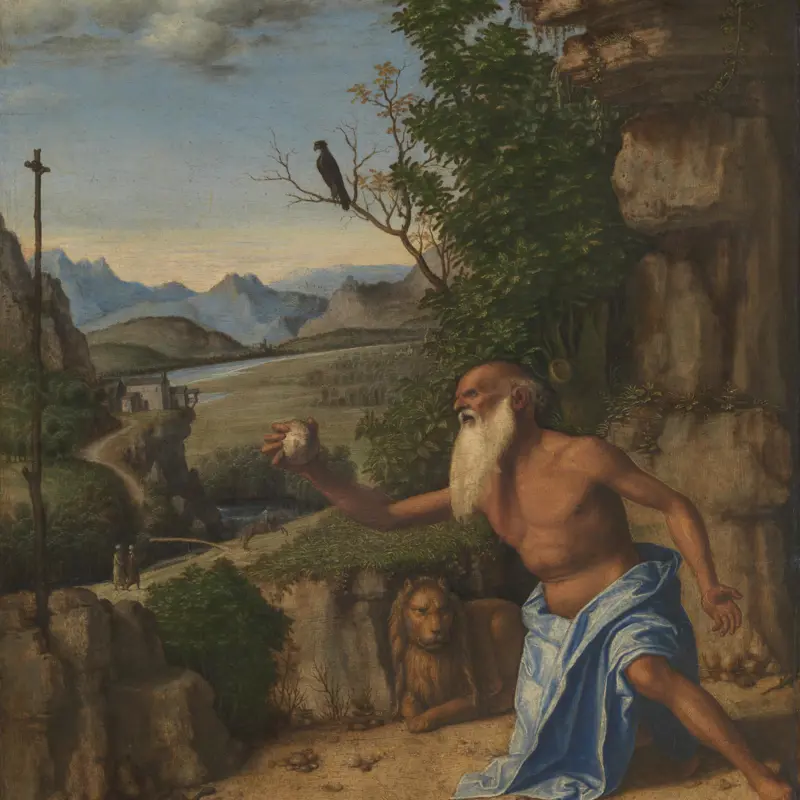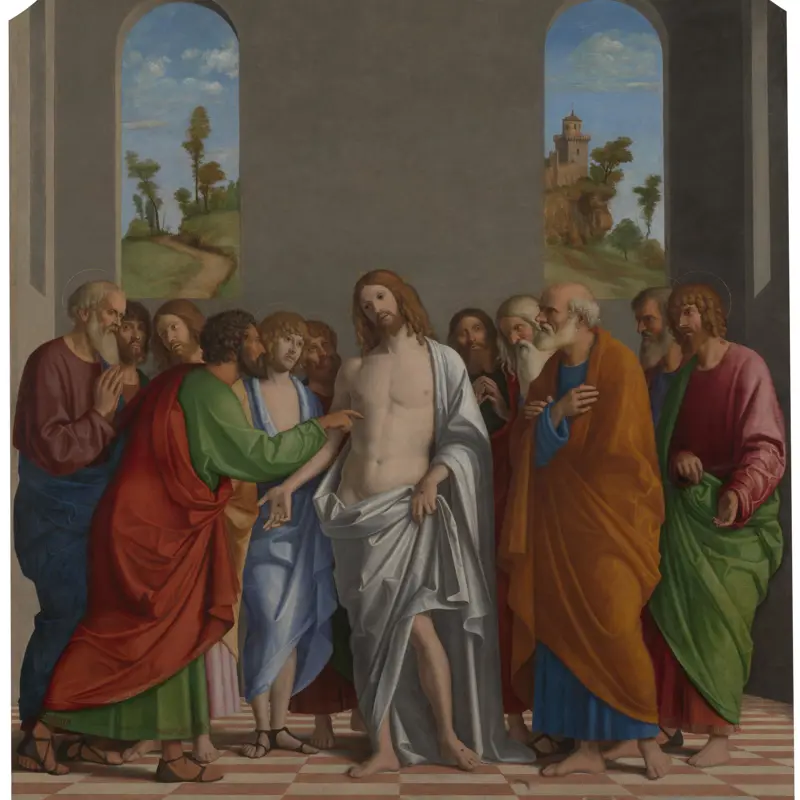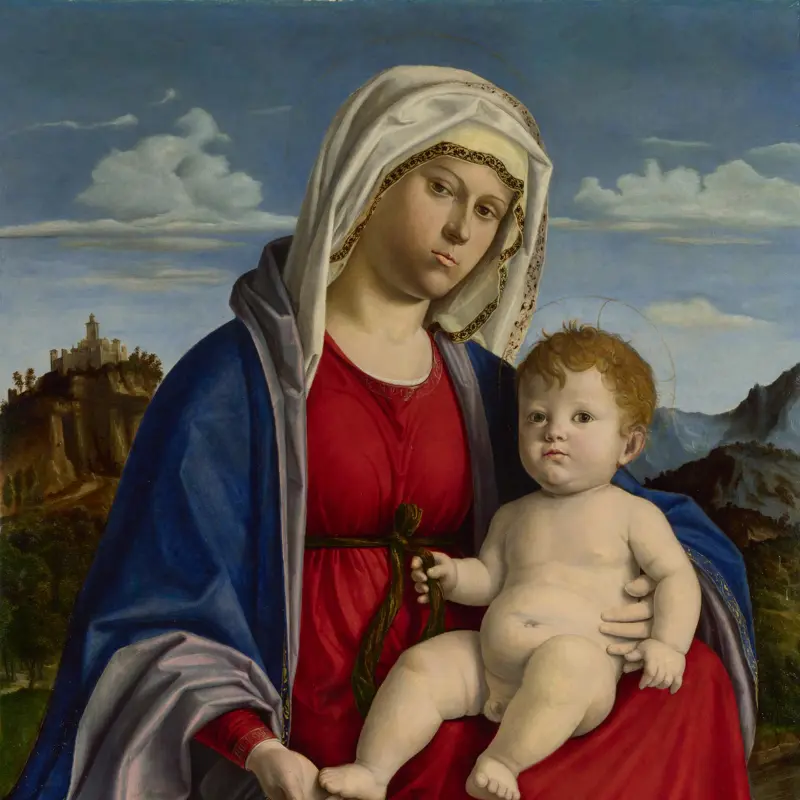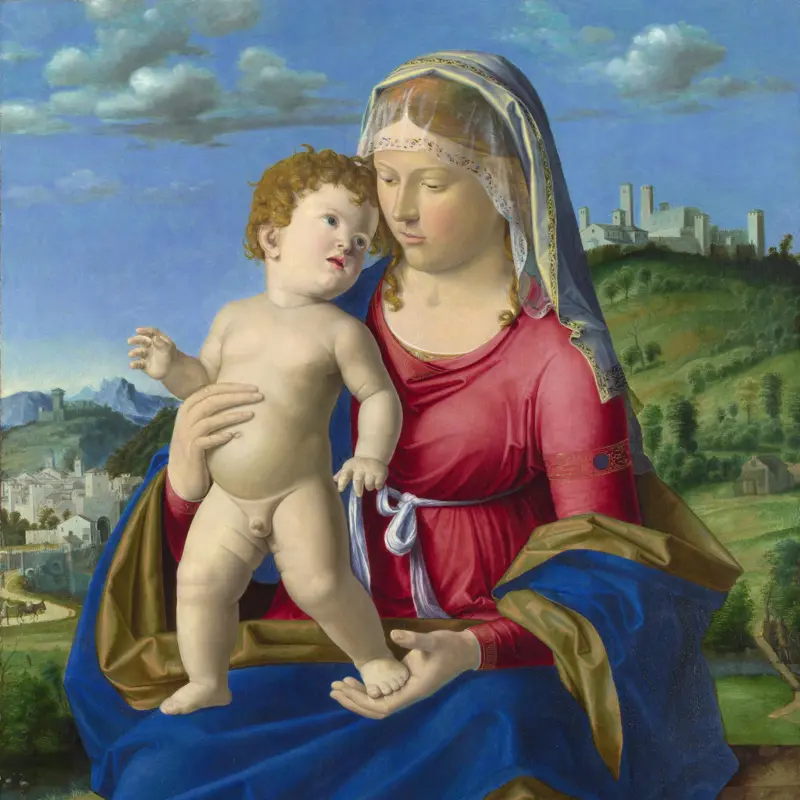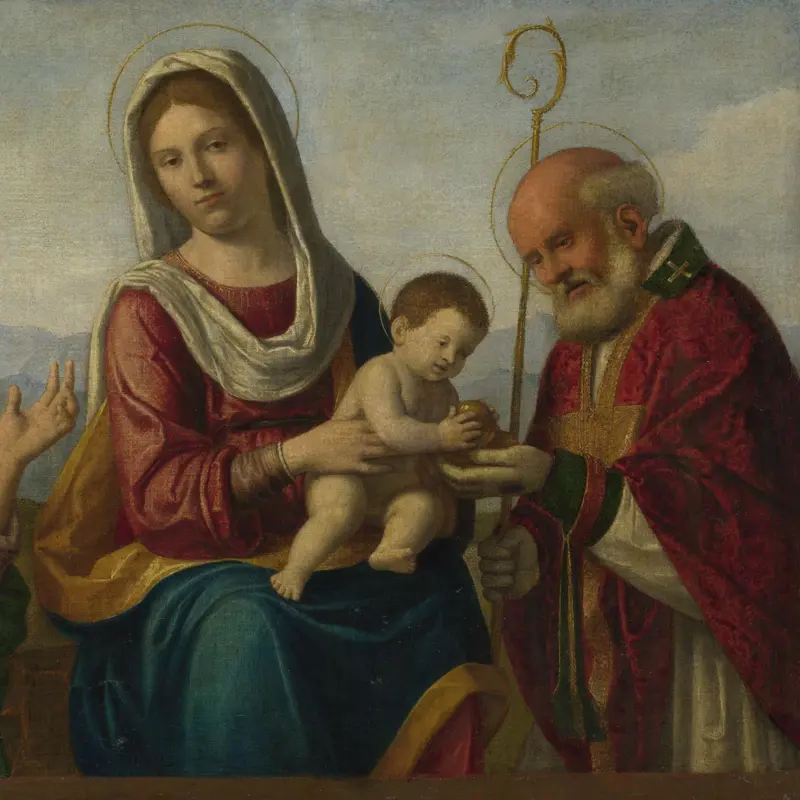Giovanni Battista Cima da Conegliano, 'The Virgin and Child', about 1505
About the work
Overview
This was one of Cima da Conegliano’s most popular designs, and he and his workshop produced a number of versions of it. The Virgin Mary sits on a marble bench in front of a sunlit Italian landscape, her body forming a solid mass which we can almost feel pressing down on the cool stone. There is hardly a cloud in the sky and Mary gazes out with unruffled serenity.
Only the pose of the Christ Child disturbs the calm. He balances somewhat precariously on his mother’s lap, pulling away from her restraining fingers. He holds a small bird, a linnet, perhaps a symbolic allusion to the Passion (Christ’s torture and crucifixion).
The marble parapet along the front serves to push the Virgin and Child back, creating a feeling of three-dimensional space which is reinforced by the distant blue hills behind them. The clear light which infuses the whole painting and the rich colours are typical of Cima’s work.
Key facts
Details
- Full title
- The Virgin and Child
- Artist dates
- About 1459/60 - about 1517/18
- Date made
- About 1505
- Medium and support
- Egg tempera with some oil on wood (poplar, identified)
- Dimensions
- 53.3 × 43.8 cm
- Inscription summary
- Signed
- Acquisition credit
- Bought, 1860
- Inventory number
- NG634
- Location
- Room 59
- Collection
- Main Collection
- Previous owners
Provenance
Additional information
Text extracted from the ‘Provenance’ section of the catalogue entry in Martin Davies, ‘National Gallery Catalogues: The Earlier Italian Schools’, London 1986; for further information, see the full catalogue entry.
Exhibition history
-
2010Cima da Conegliano: Poeta del paesaggioGalleria Comunale d'Arte Conegliano26 February 2010 - 2 June 2010
-
2015Venetian Visions: Selections from the National Gallery, LondonMaier Museum of Art at Randolph College6 November 2015 - 31 March 2016
Bibliography
-
1951Davies, Martin, National Gallery Catalogues: The Earlier Italian Schools, London 1951
-
1986Davies, Martin, National Gallery Catalogues: The Earlier Italian Schools, revised edn, London 1986
-
2001
C. Baker and T. Henry, The National Gallery: Complete Illustrated Catalogue, London 2001
About this record
If you know more about this work or have spotted an error, please contact us. Please note that exhibition histories are listed from 2009 onwards. Bibliographies may not be complete; more comprehensive information is available in the National Gallery Library.

